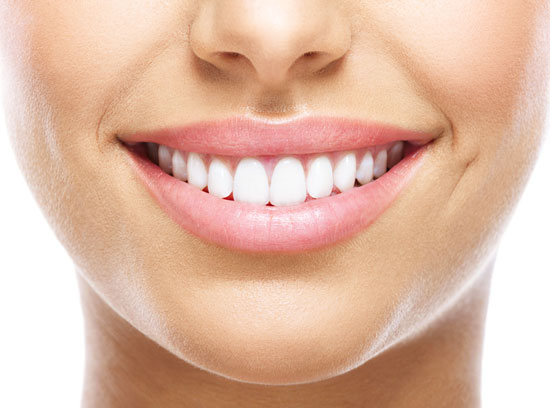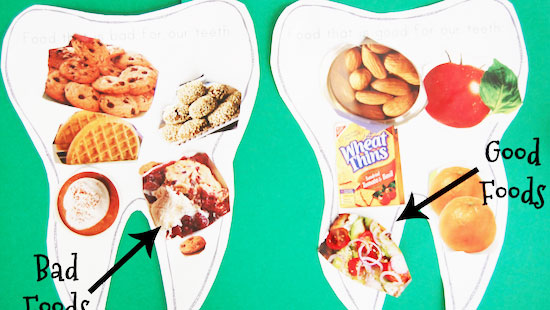Natural Approaches To Reversing Tooth Decay (1)

They say the eyes are the window to the soul, perhaps the truest reflection of one’s innermost feelings and emotions, speaking volumes even when words don’t.
But the eyes aren’t the only facial feature with an alluring story to tell. The mouth is likewise telling in the area of physical health, serving a purpose much greater in scope than just putting a smile on your face or chewing your food.
Hidden amidst that cascade of pearly whites is a complex, living organism made up of billions of tiny microbial cohabitors – a vibrant bacterial ecosystem amazingly similar to that of your gut.
Modern science is finding that this ecosystem also communicates the state of one’s health. Not with words, though your mouth can obviously do that as well, but with an array of metabolic clues.
The various elements of oral health that we’re about to discuss are directly linked to the health of the rest of the body. The health status of your oral cavity really is a reflection of the state of your body as a whole. If you know what to look for, it can reveal the presence of other underlying health conditions that need to be addressed.
It’s important to keep in mind that many common oral health problems like tooth decay aren’t normal. Neither are they just the expected outcomes of eating too much sugar and forgetting to brush your teeth – although these are obviously detrimental contributing factors. Dental caries (cavities) are often indicators of other imbalances in your system such as nutrient deficiency, for instance, or having an overly acidic internal terrain.
While getting cavities drilled and filled is now par for the course in modern dental care, this common procedure fails to address the root cause of why they formed in the first place. It can also damage key elements of the mouth’s communications system with the rest of the body, leading to problems down the road that can result in more serious procedures like crowns and root canals. Procedures that, as you’ll see, are largely unnecessary and often detrimental.
Consider the insights of oral health expert Nadine Artemis of Living Libations, who sums it up like this:
“The mouth is actually alive. It’s connected to our blood system. It’s connected to digestion, the actual core of the tooth. When we can get the body activated, then we can prevent cavities, because if we just put a filling on it, then we’re not actually addressing what caused the cavity in the first place.ˮ
Microbial Imbalances, Tooth Decay, And The Significance Of Oral Ecology
Before presenting the pitfalls of conventional dental practice and offer alternatives to many of its failed approaches, let’s explain a little bit more about the nature of the mouth and why oral ecology is so important to health. Our mouths are home to a diverse microbial civilization whose job it is to pre-digest our food, protect the integrity of our teeth and gums, and guard against pathogenic invaders.
When these friendly microbes are healthy and balanced, tooth decay is more or less a non-issue. When they’re not, problems arise. Because they’re interconnected, the friendly microbes in the gut usually end up compromised as well, which is why it’s so important to support your entire microbiome, both in your digestive tract and in your mouth. [Note: The human microbiome – or human microbiota – is the entire collection of microorganisms which live on our skin, saliva and mouth, eyes, gut, and the rest of our gastrointestinal tract.]
In his book Missing Microbes, Dr. Martin Blaser explains how friendly bacteria in the mouth rely on one another to function properly, keeping each other balanced and in check so gums don’t become diseased and teeth don’t rot. The presence of one bacterial strain without the others can lead to serious problems – or as Nadine Artemis puts it, the entire microbial ecosystem gets thrown out of balance when some bacteria are missing their “ancestral bacterial buddies.”
What, exactly, causes this imbalance? In many cases, overuse of antibiotics and other drug-based treatments that basically carpet-bomb the microbiome, leaving it vulnerable to failure and making your mouth vulnerable to disease and decay!
“The human oral cavity contains a number of different habitats, including the teeth, gingival sulcus, tongue, cheeks, hard and soft palates, and tonsils, which are colonized by bacteria,” explains a study on the human oral microbiome published in the Journal of Bacteriology, revealing how oral bacteria act as a sitting army to both protect and reinforce the mouth.
“The oral microbiome is comprised of over 600 prevalent taxa at the species level, with distinct subsets predominating at different habitats,” it adds, highlighting both the complexity in number, and simplicity in function of this amazing bacterial army. [Note: In biology, a taxon (plural taxa) is a group of one or more populations of an organism or organisms seen by taxonomists to form a single unit.]
Protecting And Supporting Your Mouth’s Microbiome Through Diet
So what can you do to protect the bacteria living in your mouth and support its proper function to avoid cavities and other oral health problems? It all starts with properly maintaining your dentinal lymph system – the detoxification and immune support mechanism through which your teeth get the nutrients they need from the digestive tract in order to continually remineralize, regenerate, and create new enamel.
You may already be aware that your body contains a network of lymph nodes whose job it is to collect and eliminate toxins, as well as boost your immune system. Well, your teeth are part of this network as well. Every single tooth in your mouth, believe it or not, has its own individual lymphatic system that’s hardwired to your parotid glands.
These parotid glands, which are activated by your hypothalamus, communicate with your stomach and intestinal tract where food is digested to obtain the nutrients your teeth need for strength and longevity. What prevents these parotid glands from functioning as they should is a lack of nutrients and poor microbiome ecology – both of which result, in large part, from a poor diet. When your teeth don’t get the nutrients they need, your mouth attempts to protect them by producing more saliva, but eventually this system fails.
“When we’re eating a diet high in sugar, we’re having blood sugar spikes, or eating a low-fat diet devoid of fat-soluble vitamins of A, D3, and K2 and when we don’t have enough minerals in our diet, what happens is this lymph system stagnates or, even worse, it can actually reverse. This is how a cavity is formed,” Nadine Artemis of Living Libations explains.
“When the dentinal lymph system reverses, the capillaries in the tooth begin to suck in bacteria and everything else in the mouth like a straw. Rather than this royal system of nutrients coming up into the teeth, it reverses and then teeth draw in bacteria into the mouth – that’s the genesis of cavity creation.”
This, of course, is why consuming foods rich in bioavailable vitamins, trace minerals, enzymes, and other key nutrients is so critical. If you’re undernourished, your mouth and teeth are going to eventually pay the price! It’s also recommended that you try to keep your blood sugar levels at 80 mg/DL (4.4 mmol/L) or lower, both fasting and after a meal, if at all possible. Doing so will further help to protect your gut and mouth microbiome from harm.
How To Properly Maintain Your Oral Cavity To Prevent Tooth Decay

Proper nutrition should be your first line of defense in protecting both your mouth and gut against disease, which we now know work together to support and maintain the dentinal lymph system. But there’s also routine maintenance of your teeth, which includes things like flossing, brushing, and getting periodic deep-cleanings at the dentist, right? Not so fast.
Each of these things can be beneficial if done right, but the problem is that many conventional approaches involve the use of chemical agents that work against the microbiome rather than for it. Many toothpaste products, for instance, contain chemicals such as fluoride and various antibacterial agents that disrupt the microbiome and leave teeth vulnerable to disease. Likewise, many dentists perform procedures that are detrimental to our long-term oral health.
“Everything that’s going on with modern dentistry is about killing – this sort of periodontal scorched earth policy on the mouth’s microbiome,” Artemis warns.
“You’ve got the really heavy duty mouth rinses, the toothpaste with triclosan and sodium lauryl sulfate, and all these chemicals.
Then, we’re masticating [chewing] meals with glyphosate and pesticides, so our mouths are like this microcosm for the whole – everything going on with the world right now, and our microbiomes are literally off-balance, like the ‘soil’ of our mouth, just like the ‘soil’ of our guts, are so out of whack.”
Keeping this all in mind, it’s obviously important to choose the right dental care products. When it comes to flossing, stick with varieties made from natural, biodegradable silk, natural waxes, and essential oils, avoiding those that contain artificial sweeteners and chemical antibacterial agents.
The same goes for toothpastes – avoid all varieties that contain fluoride, a neurotoxic substance which has been shown to degrade the gums, crumble bones, and interfere with collagen synthesis, as well as those that contain synthetic foaming agents and antibacterial chemicals like triclosan.
Choosing (or making) The Right Toothpaste
Truth be told, all you really need in a good quality toothpaste is sodium bicarbonate or baking soda, a carrier oil like coconut or olive oil (if you want a traditional-type paste that’s smooth rather than chalky), some essential oils for flavor and natural antibacterial activity, and perhaps some hydrogen peroxide to aid in whitening.
One basic recipe for making homemade toothpaste is to combine hydrogen peroxide (at 1% dilution) with baking soda in a 1:1 ratio. Food-grade hydrogen peroxide is preferable to the typical drug store variety, as it can be safely ingested in small amounts.
Stir the solution and let it evaporate naturally, and you’ll be left with a dry powder that you can apply to your toothbrush and rub on your teeth to get rid of plaque, protect tooth enamel, and regenerate healthy gums – all while supporting your mouth’s microbiome instead of destroying it.
You can also add other ingredients like thyme, tea tree, cinnamon, and peppermint essential oil both for flavor and added antibacterial and antiviral protection.
Essential oils like these that possess natural antimicrobial properties are selective, meaning they won’t harm “good” bacteria in the process of getting rid of the “bad” kind.
Nadine Artemis and her husband Ron are huge proponents of using essential oils to support oral health, which is why they developed their own toothpaste products like Frankincense Fresh Truth Toothpaste and Happy Gums Clay Toothpaste that contain essential oils in combination with other healing elements that promote oral health.
Read the second part of the article
yogaesoteric
July 16, 2018
